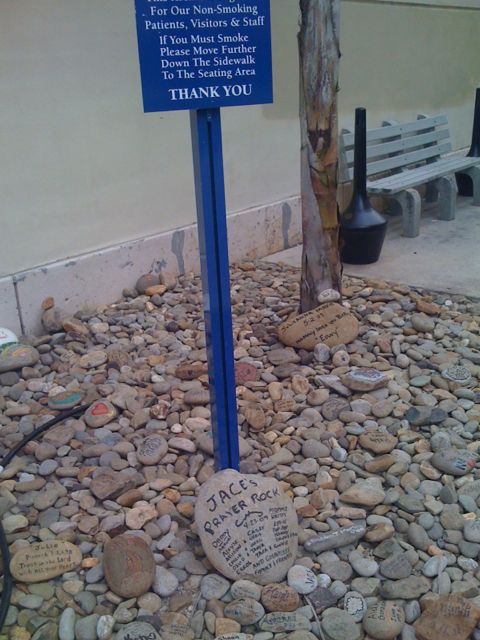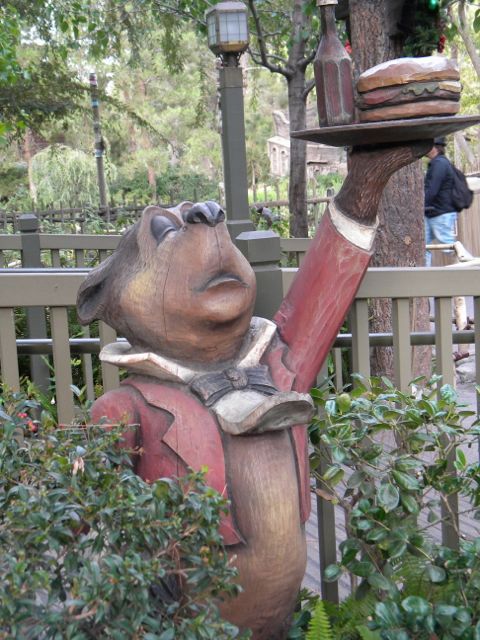A few years ago I found myself outside the hospital walking past this presentation. Following the name of the hospital, the sign says:
“For our Non-Smoking Patients, Visitors & Staff
“If You Must Smoke Please Move Further Down The Sidewalk To The Seating Area
“THANK YOU”
If you look further on, you can see that there are seats and standing ash trays for those wishing to smoke.
My guess is that they wanted to create a smoke-free area for people to enjoy, so they stuck a sign in the middle of the rocks to tell people where they should go to smoke.
Nice…I suppose.
Now look carefully at the rocks below. In memory or concern of loved ones who have been treated at the hospital, guests have started taking rocks and writing their names. Over time it’s become a sort of memorial rock garden with hundreds of named rocks.
Yet there is no acknowledgement of this spontaneous memorial. Nor has there been any embellishment of the area to more fittingly pay tribute to this gathering of stones. Indeed, if anything, the sign telling people where to smoke almost stands as a sword stuck in the middle of the pile, completely oblivious to what people see as the real purpose of this unplanned sanctuary.
If you had planned this garden out, would you have put a glaring non-smoking sign in the middle of it? The fact that they put so much attention on the sign and not on the garden sends a flag to me as to what is really the priority.
Most of us are familiar with the Golden Rule: Do unto others what you would have done unto yourself. Few of us may be familiar with the Platinum Rule: Do unto others as they would like to have done unto themselves.
I think there was good, caring intention with the sign. We all want clean air. But I think to overlook the rock garden was a bigger mistake. Clearly, this little pile of stones means a great deal to people. I think that’s what is really important to them. Why take away the focus or make it ugly with a sign–even if the sign’s message is important?
This happens all the time in organizations. We do things with good intent. But do we do them with the customer’s intent? Do we really think what might matter more to them? That’s the opportunity for all of us.
Consider this example: When you think of a great dining experience, do you think of a fine restaurant with serving staff in tails, towel over their arms and fine food on a tray?
Now consider the following image:
This little guy reminds me of an important concept in customer service. This server is dressed up in tails and tie. He has the towel wrapped around his right arm, and the tray holding dinner extended on the right. He parodies that which you might find if you were visiting the Ritz-Carlton or the Waldorf-Astoria. He is delivering what many think would be great service.
Only this location is neither. It’s really the Hungry Bear Restaurant at Disneyland, a rustic counter-service location tucked in the corner around the bend of the Rivers of America. He is serving the main entree on the menu–hamburgers!
No one who works at that restaurant really dresses in that fashion. Nor does their demeanor align with this concept. But that doesn’t mean they don’t provide great service in a beautiful setting in a way that makes guests come back again and again to enjoy. To me, delivering meals in a tux may be what some consider great service, but it’s not what people go for when they visit the Hungry Bear Restaurant.
Seeing someone in a tux delivering a hamburger seems to me as off target as stabbing a makeshift rock garden memorial with a non-smoking sign. There may be great intent, but it’s still a miss. We have to think not what we think is appropriate for our customers, but what they would see as great in their eyes.



Comments are closed.